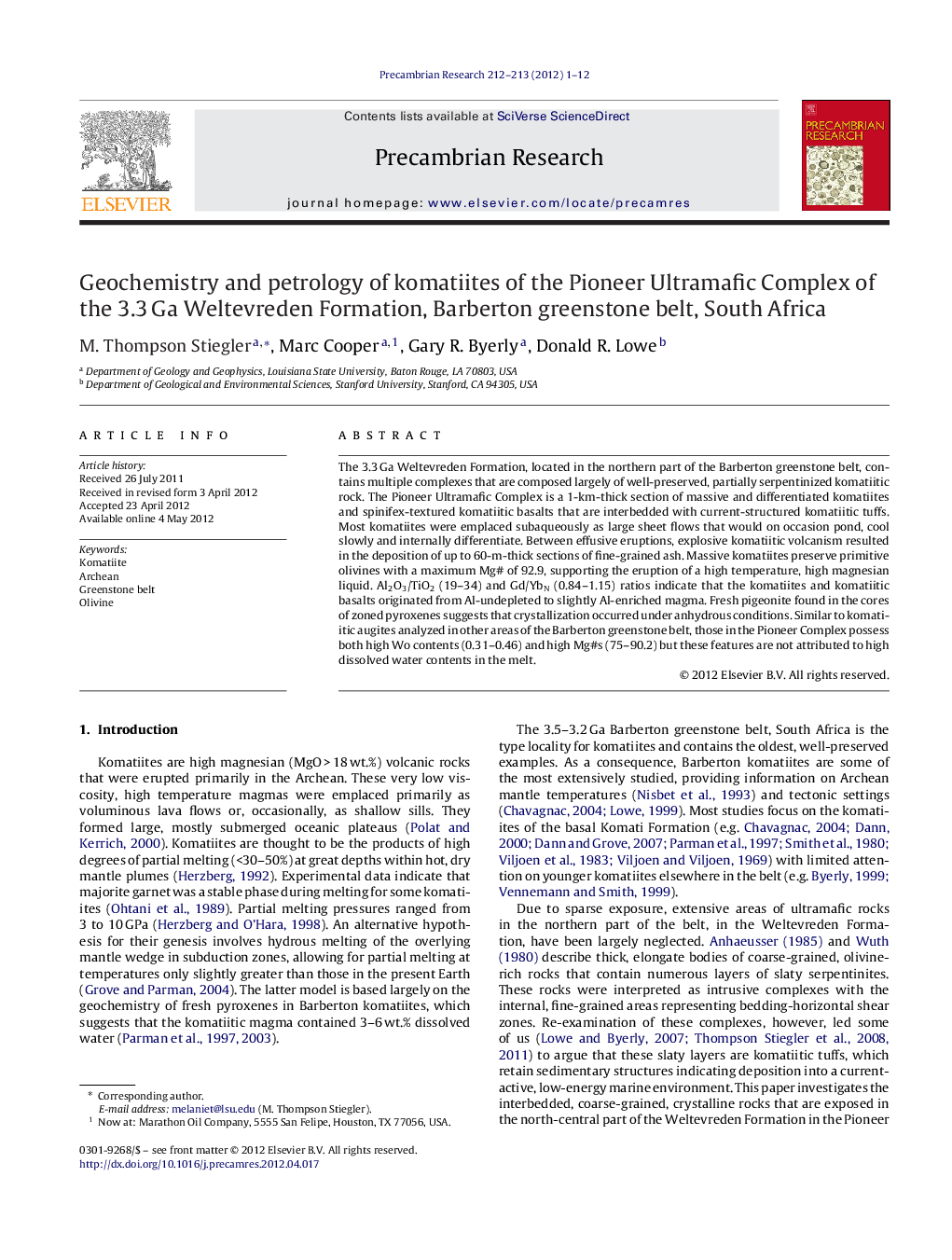| Article ID | Journal | Published Year | Pages | File Type |
|---|---|---|---|---|
| 4723529 | Precambrian Research | 2012 | 12 Pages |
The 3.3 Ga Weltevreden Formation, located in the northern part of the Barberton greenstone belt, contains multiple complexes that are composed largely of well-preserved, partially serpentinized komatiitic rock. The Pioneer Ultramafic Complex is a 1-km-thick section of massive and differentiated komatiites and spinifex-textured komatiitic basalts that are interbedded with current-structured komatiitic tuffs. Most komatiites were emplaced subaqueously as large sheet flows that would on occasion pond, cool slowly and internally differentiate. Between effusive eruptions, explosive komatiitic volcanism resulted in the deposition of up to 60-m-thick sections of fine-grained ash. Massive komatiites preserve primitive olivines with a maximum Mg# of 92.9, supporting the eruption of a high temperature, high magnesian liquid. Al2O3/TiO2 (19–34) and Gd/YbN (0.84–1.15) ratios indicate that the komatiites and komatiitic basalts originated from Al-undepleted to slightly Al-enriched magma. Fresh pigeonite found in the cores of zoned pyroxenes suggests that crystallization occurred under anhydrous conditions. Similar to komatiitic augites analyzed in other areas of the Barberton greenstone belt, those in the Pioneer Complex possess both high Wo contents (0.31–0.46) and high Mg#s (75–90.2) but these features are not attributed to high dissolved water contents in the melt.
► New interpretation of the Pioneer Ultramafic Complex. ► Predominantly extrusive volcanic terrain consisting of komatiitic flows and tuffs. ► Fresh olivine, pyroxene, and spinel in massive and differentiated komatiites. ► Fresh pigeonite cores in zoned pyroxenes indicate crystallization under anhydrous conditions. ► High Wo and Mg#s in augite do not reflect high magmatic water contents.
